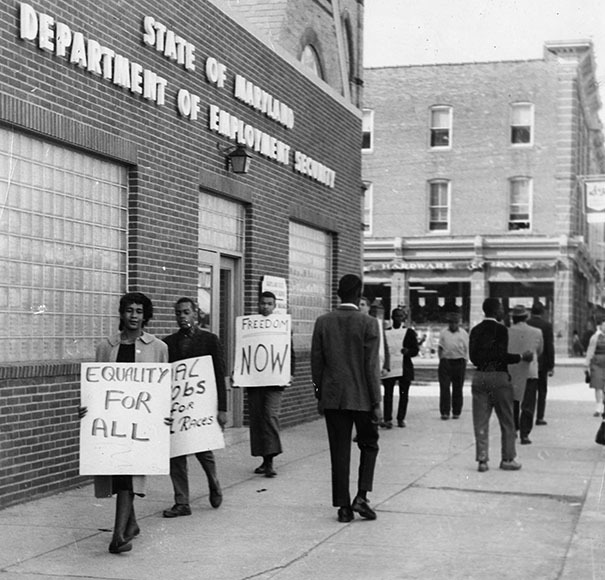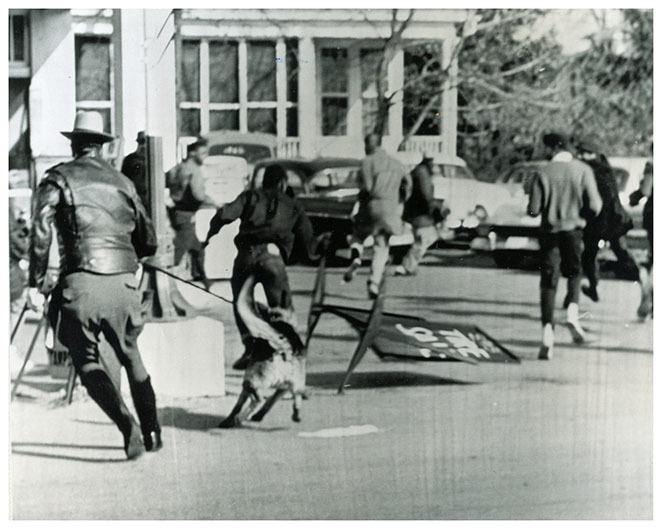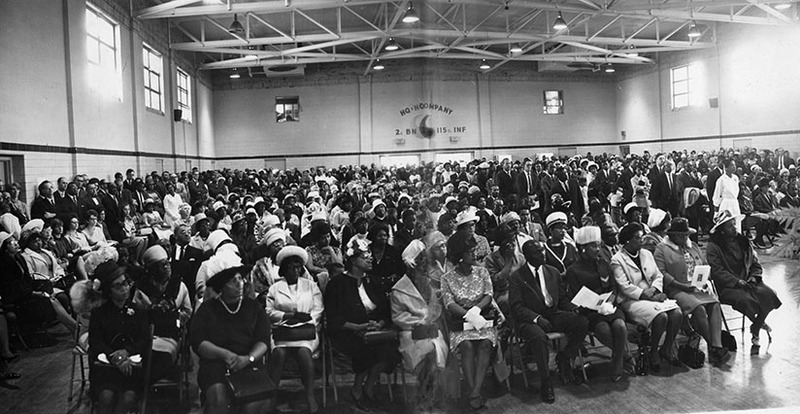Civil Rights Movement on the Eastern Shore of Maryland
The 1960s is a period defined by the civil rights movement. During this time, sit-ins, marches, and other forms of demonstration took place across the country to protest longstanding racial inequality. While the movement gained much attention in heavily segregated southern states, it also had an impact on towns on the Eastern Shore of Maryland.
The Cambridge Movement
Cambridge, MD, garnered national attention throughout the 1960s due to its role in the civil rights movement. Cambridge saw its first civil rights demonstrations and sit-ins in early 1962, which led to the founding of the Cambridge Nonviolent Action Committee (CNAC).
During the spring and summer of 1963, CNAC began to hold marches in protest of the town’s various segregated facilities, economic inequalities, lack of civic representation, and other injustices faced in the Second Ward, a largely African American section of the town. Spearheading these demonstrations was activist and Dorchester native Gloria Richardson. Demonstrators were met with counter protests and violence, prompting Governor J. Millard Tawes to enact martial law in Cambridge.
After the protests gained attention from the nation’s capital, meetings were held between Richardson, CNAC, and Attorney General Robert F. Kennedy. Arising from this meeting was the Treaty of Cambridge, which pledged to speed up desegregation efforts and enact several other changes in the African American community. While the agreement signified progress in Cambridge, local business associations ultimately thwarted desegregation efforts outlined in the Treaty, and the town would continue to face racial strife in the following years.
Princess Anne: “A ‘Little Birmingham’ of the Civil Rights Movement”
Similar to Cambridge, another Eastern Shore town saw largely student-led protests and marches during the mid and late 1960s. Princess Anne, MD, was the site of Maryland State College, today known as the University of Maryland Eastern Shore (UMES). In February 1964, students demonstrated against segregated public areas in Princess Anne. They marched and sang freedom songs, but unrest ensued when law enforcement began to disperse the students. Police dogs and firehoses were used on protesters, prompting the Washington Post to deem Princess Anne a “little Birmingham,” likening the situation to previous unrest in the Alabama city.
Turmoil in Salisbury
With a history of race-based violence and lynchings, Salisbury, MD, has long been a site of racial tension. Seemingly more progressive than neighboring areas, Salisbury had established a bi-racial commission and public accommodations had become integrated. However, Salisbury still faced issues related to economic inequality, lack of representation, and instances of police brutality.
In spring 1968, protests and uprisings took place after a Salisbury police detective fatally shot Daniel Henry, a 22-year-old black male described as deaf-mute. After the incident, violence followed, with store windows being smashed and fires breaking out across town. Protests prompted Maryland Governor Spiro Agnew to declare a state of emergency, calling in the National Guard to Salisbury. The NAACP held protests to hold the detective accountable. He was ultimately suspended from the force but not charged.
Aftermath and Legacy
The general impact of 1960s demonstrations included the adoption of many pieces of momentous civil rights legislation, integration of schools and public areas, and a gradual improvement in employment opportunities in Black communities. However, instances of police brutality and institutional racism continue to plague the nation, and the social climate today has been regarded as evocative of the civil rights movement.



